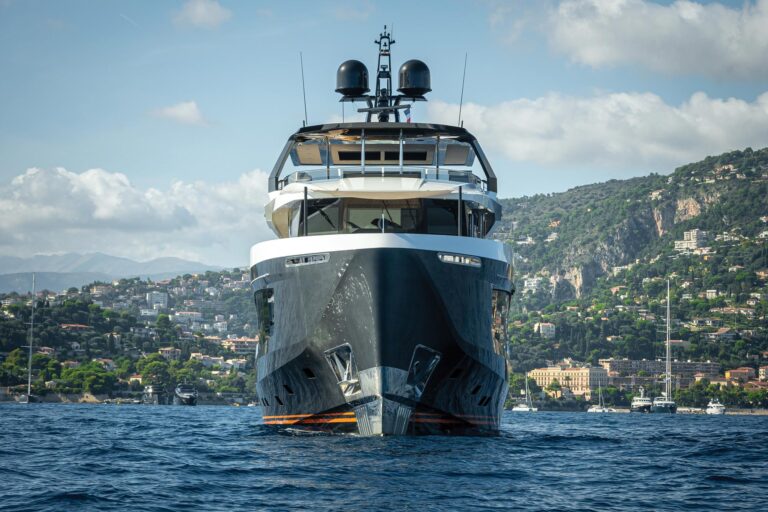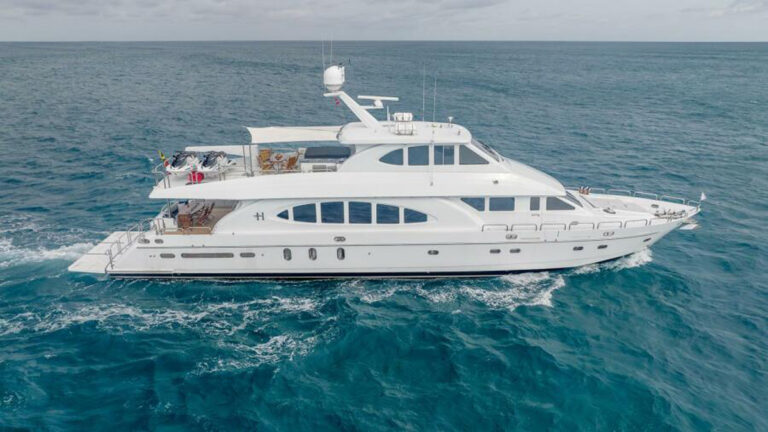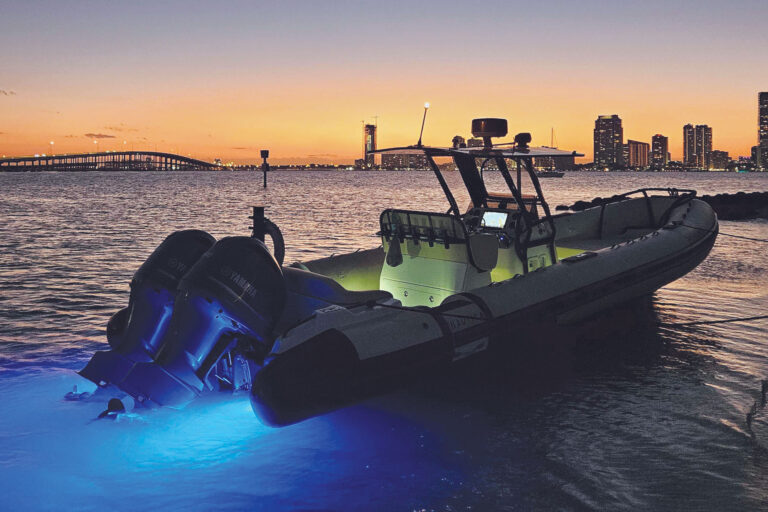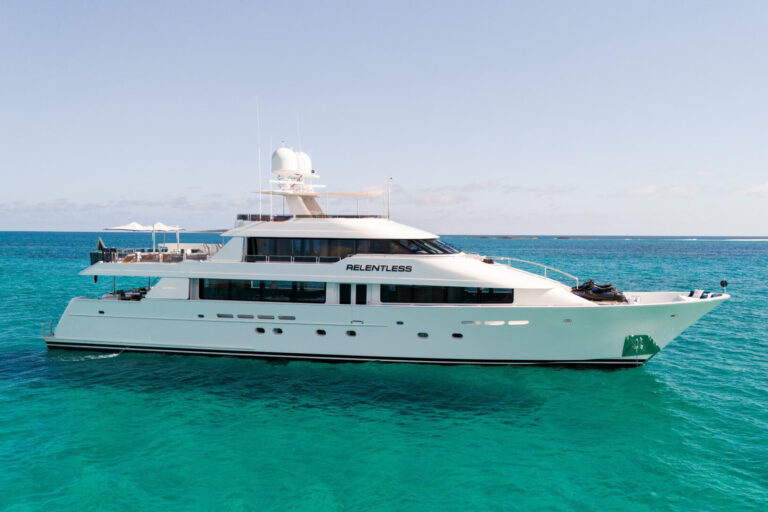It is obvious that the new Si-Tex CVS-106L Color Fish Finder was designed by engineers who know something about life on the water. The 6-inch diagonal, 320-by-240 pixel color LCD provides sharp, high-contrast images. Though the screen is not quite bright enough to be fully readable in direct tropical sunlight, it is usable in an open cockpit, especially with the white background selected. Polarized sunglasses don’t wipe out the images, a characteristic sometimes overlooked by design engineers who are not boaters.
The Si-Tex team’s boat awareness is also apparent in the design of the unit’s waterproof, cast metal case. Mounting provisions include top and bottom trunion mounting, plus a simple and attractive means for flush-mounting without resorting to an adapter kit.
The CVS-106L provides 300 watts of pulse power to its dual-frequency, 50 and 200 kHz transducer. All the expected fishfinder modes are present, including a number of split-screen display choices, image zoom, A-scope and a radar-like variable range marker. Connected to the boat’s GPS or loran C navigator, the 106L can display present position, course, boat speed and trip mileage. Position appears in either lat/lon or TD format, user’s choice, making the unit fully compatible with the needs of fishermen who rely upon TD-LOPs to find their favorite spots.
Depending on which transducer you use, the water temperature and the speed of the hull through the water also may show on the screen. Pressing the Event key on the control panel stores the boat’s present position, water temperature and bottom depth. Only a single set of stored data can be held in memory. A control action to erase the stored data, available only via page three of the on-screen menu, protects the integrity of the stored data.
The operator’s manual does a good job of introducing new users to the control actions required to access the numerous operating modes. Most functions are selected with use of single-purpose control keys, and users access the various steps within the range of the control via sequential keystrokes. A first-time user exploring the unit with the key-poke method won’t get lost.
Si-Tex gave the 106L nine steps of manual range, from 10 to 1,280 feet. Selecting the Auto range option sets the depth to match that measured when the unit is switched on. Users also get 20 increments of gain, in addition to an Auto setting: five choices of image speed, plus Stop. The Auto range shift mode will keep the sea bottom on the screen at all times.
Vertical and horizontal split-screen modes, in most cases, divide the screen equally between the two data presentations, but a bottom lock display will occupy only the bottom third of the screen, leaving the top two-thirds for the normal zoom range display. Users can call up the A-scope display at any time, regardless of what other mode is in use.
Although operation is straightforward, obtaining the full value from its various capabilities involves a number of initial setup and in-use control settings beyond those immediately available from the single-use keys on the control panel. A total of five menu pages provides access to all selectable functions. When a menu page is on-screen, the key adjacent to each displayed menu function becomes a soft key, controlling selection of the adjacent menu variable.
This methodology becomes obvious almost immediately. Users enter the two initial menus used to configure the finder with the unit powered down by simultaneously pressing the Menu and Power-On keys. A total of 14 setup parameters can be entered on these two pages. These pages, once set, will rarely have to be visited. Three in-operation menu pages, two providing control of seven operating parameters and one controlling six functions, can be accessed by pressing the Menu key. Pressing the Mode key restores the unit to normal control status.
Each keystroke is accompanied by a beep from a rear panel acoustic transducer. Although confirmation of a keystroke is normally desirable, no program control is available for turning off or adjusting the sound level of the beep. The beep is emitted from the rear of the unit, and the level may be a bit too low if the unit is flush-mounted in a large, sealed instrument panel. You may decrease the sound level by placing a piece of tape over the hole through which the beep is emitted. Inelegant, perhaps, but it works. There is no provision for connection to an external acoustic sounder.
Transducers available for use with the CVS-106L include transom-mount or through-hull type. Each offers the option of water-temperature and boat-speed sensors. The serial data connector on the rear of the unit allows connection to NMEA 0183 data format equipment, such as the GPS or loran C, and delivery of fishfinder information to companion equipment, such as chart plotters and computers.
The CVS-106L is well designed, well engineered and built to withstand the rigors of the marine environment. Owners of small boats who remove the unit from the helm when the boat is not in use will appreciate the captive waterproof cover in the transducer cable connector. It allows the connector pins to be protected from the elements when the fishfinder is stowed. (A similar cap is not provided for the even more vulnerable power cable connector.)
With the continuing progress in fishfinder technology, it would be interesting to know what countermeasures the fish are working on.
Suggested retail price: $1,239.
Contact: Si-Tex, (727) 576-5734; www.si-tex.com.









